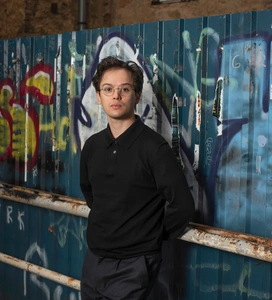Rome on Display

Loris Luigi Perillo
Loris L. Perillo is an architect and researcher based in Basel.
He completed his architectural studies in Rome, Milan, and Santiago de Chile. Since 2023, he has established his collaborative practice named commisura, operating between Basel and Milan.
His area of research centers on the relationship between time and buildings. He has delivered lectures on this subject and other related topics at Politecnico di Torino and Politecnico di Milano, and his research has being published in different countries. Since 2020, he has been teaching assistant at Politecnico di Milano for professors P. P. Tamburelli (Baukuh), C. Magni (Casabella), and N. Bassoli (Triennale di Milano).
Andrea Arcese is an architect based in Rome. He completed his architectural studies across Rome, Porto, and Milan, compliting his MSc degree in 2020. Following his studies, he gained professional experience in both Porto and Rome. In 2021 he started his own architectural practice by carrying out private commissions and participating in public competitions. With a group of architects, in 2022 he won the competition for the demolition and reconstruction of a school in Italy, now under construction. His architectural practice is characterized by collaborative efforts dedicated to enhancing projects of public significance, with particular emphasis on landscape integration, site-specific considerations, and the ethical implementation of architectural interventions.
Since 2023, he is teaching assistant at the University of Roma Tre.
In Italy, foundations and museums organize numerous events, temporary and permanent exhibitions, and cultural initiatives throughout a programming year, utilizing significant sums of money (approximately the 5,6% of the country's total economy).
Simultaneously, Italy's building heritage is profoundly dated: 12% of dwellings were constructed before 1918, while 65% of all dwellings in the country were built before 1970. Consequently, Italian cities require substantial resources to adapt and improve their building heritage, ensuring contemporary living standards for their inhabitants.
What if temporary exhibitions held in museums became a tool to also enhance residential building fabric? Could there be a relationship between the two phenomena?
The city of Rome, like other cities, requires interventions to redevelop its building heritage. Housing complex such as Ponti in Laurentina, Vigne Nuove, Corviale, and even the more central Villaggio Olimpico are portions of the city known for their iconic status but also for lacking quality public spaces and services.
"Rome on Display" is a research initiative aiming to develop an intervention methodology that leverages the design, economic, and creative nature of exhibitions to transform these areas. The installation is conceived as the integration of durable elements within these buildings, ready to be repurposed in the future to support new activities and functions.
This isn't merely a transfer of exhibition practices from inside museums to outside spaces but rather a construction of a versatile space ready to be implemented. In this way, resources used for temporary exhibitions gain lasting value within the city's transformation processes. Exhibitions become an opportunity to activate regeneration processes within residential spaces with a long-term strategy, making foundations and museums not only promoters of culture in society but also agents of social transformation.
